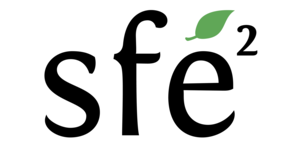Nous* proposons un stage de M2 à Bordeaux sur l’utilisation des sciences participatives comme outil pour la détection et le monitoring des ravageurs exotiques en forêt
* Bastien Castagneyrol, UMR BIOGECO ; Maarten de Groot, Slovenian Forest Institute
# Evaluating the Potential of Citizen Science for Forest Health Surveillance
Scientific context | Forest ecosystems are central to the EU strategy to achieve climate neutrality by 2050 and to put Europe’s biodiversity on the path to recovery by 2030. However, European forests are under increasing strain. Climate change and associated hazards such as storms, heat waves, and droughts directly threaten forest stability, in addition to increasing forest vulnerability to other destructive threats such as pests and pathogens.
The rate of introduction of invasive alien species has steadily increased over the last decade, further aggravating biotic threats to forest ecosystems. Acknowledging this, EU Regulations (EU) 2019/2072 and (EU) 2019/1702 have defined a list of union quarantine pests and priority pests, whose detection in any European Union Member State must trigger immediate eradication measures. Fortunately, successful eradication is possible if the early detection and reporting of quarantine and pest insects to the authorities enable a quick response (Tobin et al. 2013). This requires that species introductions are detected and the information is immediately shared with regulatory authorities.
In this context, citizen science initiatives, particularly online collaborative naturalist platforms (e.g., iNaturalist.org), have the potential to complement the efforts of authorities in charge of plant health surveillance. A recent survey demonstrated that first occurrences of invasive alien species are often found in crowdsourced databases before they appear in official records. However, relying on citizen science as a generalized surveillance tool for invasive alien species will only be relevant if, in each country, there are citizen scientists likely to detect IAS in the field and share their observations.
Objectives | In this project, we will create a profile description of citizen scientists making observations of forest pests based on meta-data available in crowdsourced platforms. We will use this information to map opportunities for citizen science-based surveillance of quarantine and priority pests at the European level. To this end, we will use statistical approaches that are familiar to community ecologists, except that we will work on people rather than on species.
Practical information | We are looking for students with a pronounced taste for computing and more-than-basic skills in geospatial analyses, most preferably in the R environment. We welcome applications from students in the field of ecology or geography.
Starting date: Between January and March 2025
Our laboratory (BIOGECO, INRAE – University of Bordeaux) is located in Cestas Pierroton, about 20 km South from Bordeaux. By the law, the student will receive a grant corresponding the 1/3 of the (French) minimal salary. S·he will be provided with a computer, desk space and a friendly but productive (or the other way around) working environment. S·he will have sereval opportunities to collaborate with partners of the FORSAID project (Horizon Europe) that started in September 2024. Notably, close interactions with scientists at the Slovenian Forest Institute.
Contact: Bastien Castagneyrol – bastien.castagneyrol@inrae.fr

Commentaires récents